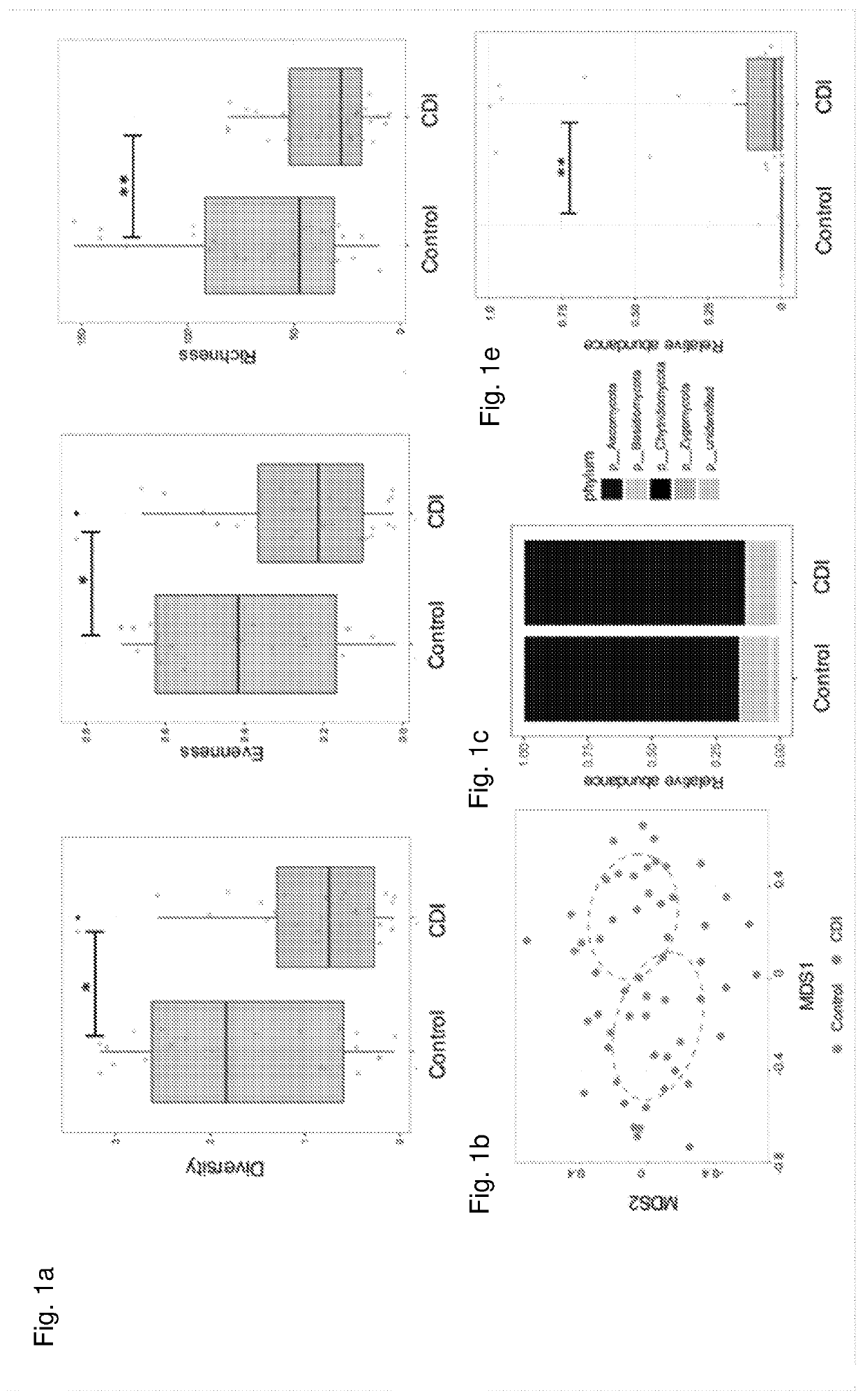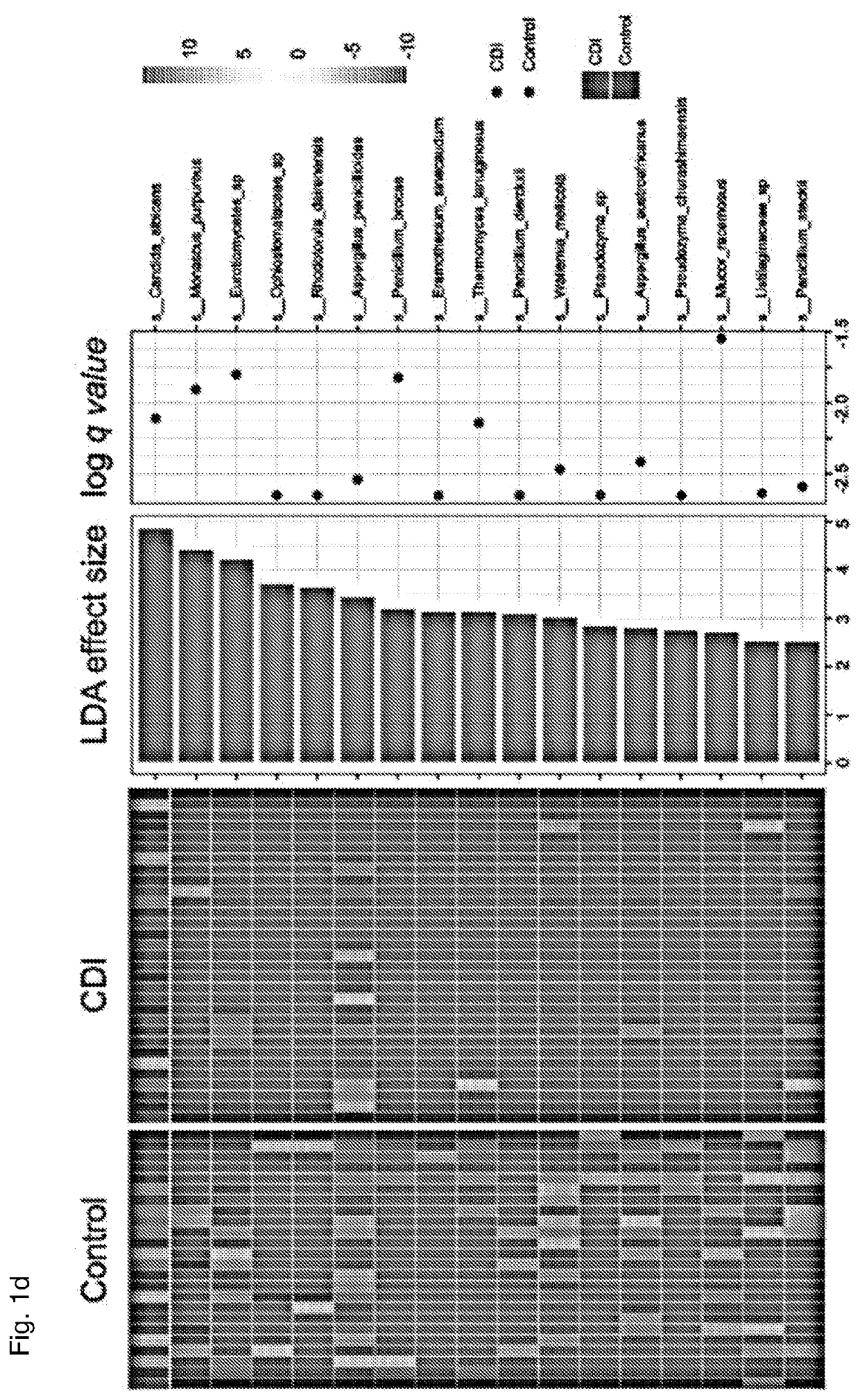Fecal fungome and therapeutic efficacy of fecal microbiota transplantation
a technology of fecal microorganisms and fungi, which is applied in the direction of microorganisms, plant/algae/fungi/lichens ingredients, and drug compositions, etc., can solve the problems of ineffective fmt, poor outcome, and negative impact on the therapeutic effect of fmt, so as to suppress the growth or proliferation of c and improve the effect of efficacy
- Summary
- Abstract
- Description
- Claims
- Application Information
AI Technical Summary
Benefits of technology
Problems solved by technology
Method used
Image
Examples
example 1
Introduction
[0056]Fecal microbiota transplantation (FMT) is effective in treating recurrent Clostridium difficile infection (CDI) and is increasingly being utilized in other human diseases. Whilst bacteria colonization in recipients after FMT has been established, little is known of the role of the gut mycobiota. In this study the present inventors show gut fungal dysbiosis in CDI and identify that donor-derived fungi colonization in recipient is associated with FMT response. Mycobiota profiling in CDI reveals over-presentation of C. albicans and decreased fungal diversity, richness and evenness compared with healthy controls. Cure after FMT was observed when donor-derived fungal taxa predominated in recipients' mycobiota. FMT responders display a high prevalence of Saccharomyces and Aspergillus whilst non-responders and individuals treated with antibiotics display a dominant presence of Candida. High abundance of C. albicans in recipient before FMT and in donor stool nullifies FMT ...
example 2
C. albicans Level Associated with Unfavorable FMT Outcome in IBD
[0107]The fecal C. albicans level was investigated in three IBD patients with concurrent CDI, and subsequently followed them up after FMT (FIG. 21). Disease symptoms were ameliorated soon after FMT. However, all three patients manifested unfavorable FMT outcomes at different time-points post FMT. In accordance with the finding for CDI patients, these IBD patients all showed increased fecal C. albicans levels after FMT. Taken into consideration the previous observation that C. albicans levels were also higher in IBD than in Controls (FIG. 18), it indicates that C. albicans may play an unfavorable role in IBD and IBD-FMT.
[0108]All patents, patent applications, and other publications, including GenBank Accession Numbers, cited in this application are incorporated by reference in the entirety for all purposes.
TABLE 1Duration ofOutcomeSevere / follow up(till lastSubjectSexAgeSmokingModerate(wks)follow up)FMT1M80Ex-smokerModera...
PUM
| Property | Measurement | Unit |
|---|---|---|
| pH | aaaaa | aaaaa |
| concentration | aaaaa | aaaaa |
| composition | aaaaa | aaaaa |
Abstract
Description
Claims
Application Information
 Login to View More
Login to View More - R&D
- Intellectual Property
- Life Sciences
- Materials
- Tech Scout
- Unparalleled Data Quality
- Higher Quality Content
- 60% Fewer Hallucinations
Browse by: Latest US Patents, China's latest patents, Technical Efficacy Thesaurus, Application Domain, Technology Topic, Popular Technical Reports.
© 2025 PatSnap. All rights reserved.Legal|Privacy policy|Modern Slavery Act Transparency Statement|Sitemap|About US| Contact US: help@patsnap.com



